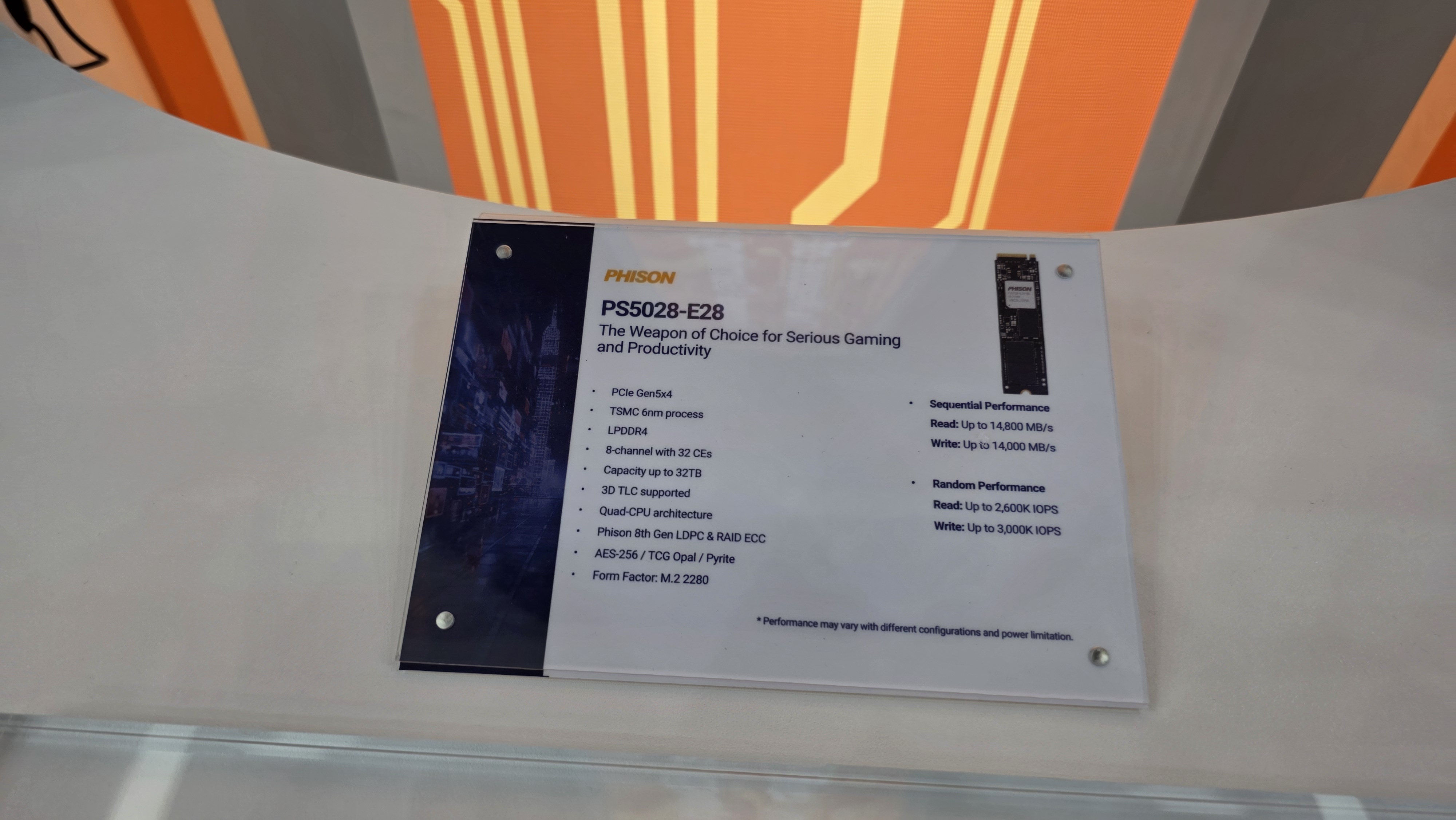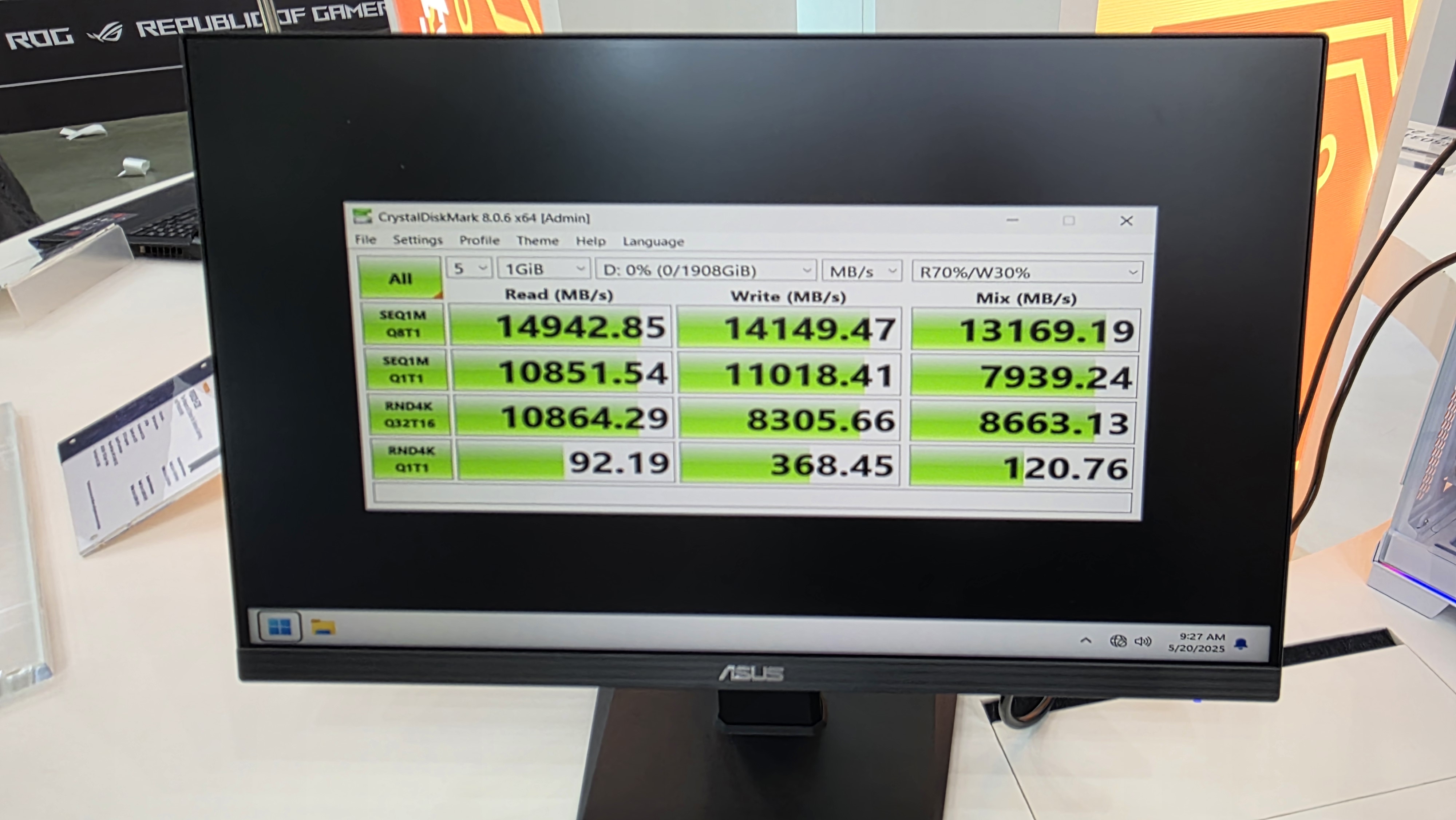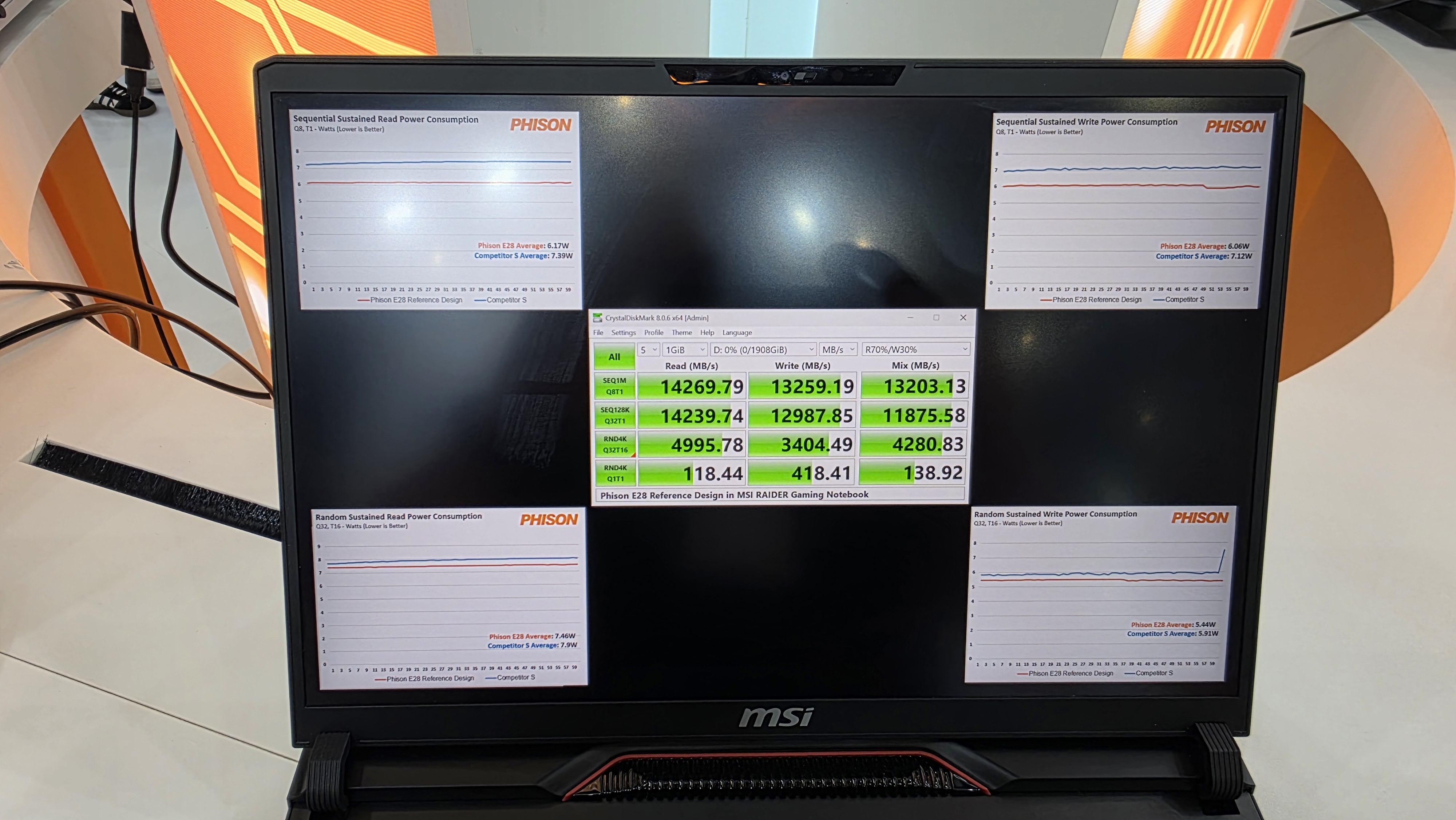Phison's E28 controller's 14.8 GB/s, 3,000K IOPS, and 7W power draw could make it the new king of PCIe 5.0 performance

Phison is demonstrating the capabilities of its upcoming flagship E28 PCIe 5.0 controller at Computex 2025, where it appears to excel over its rivals. The E28 thrashes competitors like Samsung's fastest 9100 Pro offerings in random reads and writes, achieving parity in sequential reads and delivering impressive efficiency numbers.
Building on its CES 2025 unveiling, the E28 is now roaring to life, driving a reference platform. The Phison E28 serves as the company's long-awaited successor to the E26, which for a long while was hailed as the fastest PCIe 5.0 offering, eventually surpassed by SiliconMotion's SM2508 and Samsung's Presto. The E28 is fabbed using TSCM's 6nm process, compared to the 12 nm-based E26, while supporting upwards of 32TB of TLC flash along with robust error correction technologies like LPDC and RAID ECC. It supports an eight-channel layout at 4200 MT/s along with AES-256, TCG Opal, and Pyrite encryption capabilities.
Phison advertises the E28 with 14.8 GB/s and 14 GB/s sequential read and write speeds, only second to SanDisk's WD SN8100. The E28 truly excels in random I/O, thrashing all competition with remarkable read and write IOPS of 2,600K and 3,000K, respectively. This effectively dethrones Samsung's Presto-powered 9100 Pro by 400 IOPS across each department. The E28 is touted by Phison as the first controller to feature integrated AI processing, which supposedly makes future SSDs powered by these controllers a great fit for accelerating AI/ML workloads and the like.



In some images we managed to grab, the Phison E28 reference platform almost breaches the 15 GB/s barrier, powering a Ryzen 7 9700X and Asus ROG Crosshair X870E equipped system. Phison claims 15% lower power consumption versus competing 6nm-based alternatives. In sustained workloads, when equipped with the MSI Raider GE78 HX 14VGG with the i9-14900HX, the controller's average power draw peaked at 7.46W, a notable improvement over the E26.
The figures also check out with exclusive benchmarks of the E28 we shared previously.
Name | Phison E28 Reference | WD SN8100 | Kingston Renegade G5 | Samsung 9100 Pro | Crucial T705 |
Flash Memory | 218-Layer BiCS8 TLC NAND from Kioxia (Likely) | 218-Layer BiCS8 TLC NAND from Kioxia | 218-Layer BiCS8 TLC NAND from Kioxia | 236-Layer Samsung TLC NAND | 232-Layer Micron TLC NAND |
Form Factor | M.2 2280 | M.2 2280 | M.2 2280 | M.2 2280 | M.2 2280 |
Controller | Phison E28 | SM2508 | SM2508 | Samsung Proprietary (Presto) | Phison E26 |
DRAM | Yes | Yes | Yes | Yes | Yes |
TBW (for 4TB variant) | N/A | 2,400TB | 4,000TB | 2,400TB | 2,400TB |
Sequential Reads | 14.8 GB/s | 14.9 GB/s | 14.8 GB/s | 14.8 GB/s | 14.5 GB/s |
Sequential Writes | 14 GB/s | 14.0 GB/s | 14.0 GB/s | 13.4 GB/s | 12.7 GB/s |
Random Reads | 2,600K | 2,300K | 2,200K | 2,200K | 1,550K |
Random Writes | 3,000K | 2,300K | 2,200K | 2,600K | 1,800K |
Phison reports that the E28's initial production run has been successful, and the company is now moving to mass production. Consumer SSDs powered by this controller should arrive by the latter half of the year, though this timeline might stretch into 2026.
Follow Tom's Hardware on Google News to get our up-to-date news, analysis, and reviews in your feeds. Make sure to click the Follow button.
Get Tom's Hardware's best news and in-depth reviews, straight to your inbox.

Hassam Nasir is a die-hard hardware enthusiast with years of experience as a tech editor and writer, focusing on detailed CPU comparisons and general hardware news. When he’s not working, you’ll find him bending tubes for his ever-evolving custom water-loop gaming rig or benchmarking the latest CPUs and GPUs just for fun.
- Paul AlcornEditor-in-Chief
-
JarredWaltonGPU Whoop, whoop! Go Phison! 🙃 Interesting that Kioxia BiCS8 218-layer gets the nod here, where all the E26 stuff was Micron 232-layer. I believe Micron also has 276-layer or somethign now, I'm hoping for higher sustained performance this gen, like 6 GB/s would be sweet. LOLReply -
tafreire For me, it's more important that an SSD has low electrical consumption than the very high speed of the PCIe 5.Reply